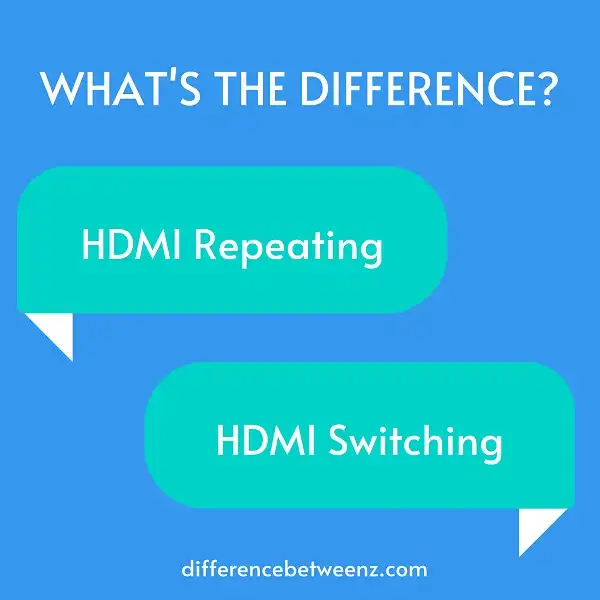HDMI switching and repeating are two different technologies used to manage HDMI signals. Although they both have the same goal – to send an HDMI signal from one device to another – they use different methods and have different benefits. In this article, we’ll break down the difference between HDMI switching and repeating, and explain which technology is right for you.
What is HDMI Repeating?
HDMI repeating is defined as the HDMI signal being received and then retransmitted. HDMI repeating can be useful when trying to connect multiple HDMI devices to a single HDMI port. HDMI repeating can be performed using either an HDMI amplifier or an HDMI repeater.
An HDMI amplifier takes the incoming HDMI signal and amplifies it before sending it out to the connected devices. An HDMI repeater, on the other hand, regenerates the incoming HDMI signal before sending it out to the connected devices. Either way, HDMI repeating can help to ensure that all of the connected devices receive a strong and consistent HDMI signal.
What is HDMI Switching?
HDMI Switching is the process of connecting HDMI-compatible devices to a single HDMI port. This allows for more organized and efficient use of HDMI ports, as well as the ability to connect multiple HDMI devices to a single display. HDMI Switches come in a variety of sizes and styles, with some featuring multiple HDMI ports and others offering features such as remote control and automatic switching. HDMI Switching is a simple and effective way to connect multiple HDMI devices to a single display, making it an ideal solution for both home and office setups.
Difference between HDMI Switching and Repeating
HDMI Switching is the act of selecting which HDMI source device will be output to the HDMI display. An HDMI Switch allows for multiple HDMI source devices to be connected to a single HDMI display. The HDMI Switch will have one or more inputs that each connect to an HDMI source device. The HDMI Switch also has one output that connects to the HDMI display. The user will select which input is active by using a button on the front panel of the HDMI Switch, by using an IR remote control, or via RS232 commands.
HDMI Repeating is the act of taking an incoming HDMI signal and repeating/amplifying the signal so that it can be output to multiple HDMI displays. Typically, an HDMIRepeater will have one input (that connects to the HDMI source device) and two outputs (that connect to each of the HDMI displays). The Repeater amplifies the signal so that it can be sent over longer distances and also sends an equal signal to each of its outputs.
Conclusion
HDMI switching and repeating are two different ways of handling multiple HDMI signals. Switches allow for devices to be connected and disconnected without interrupting the signal, while repeaters regenerate the signal so that it can travel longer distances. Both have their benefits and drawbacks, but which one is right for you will depend on your specific needs.


